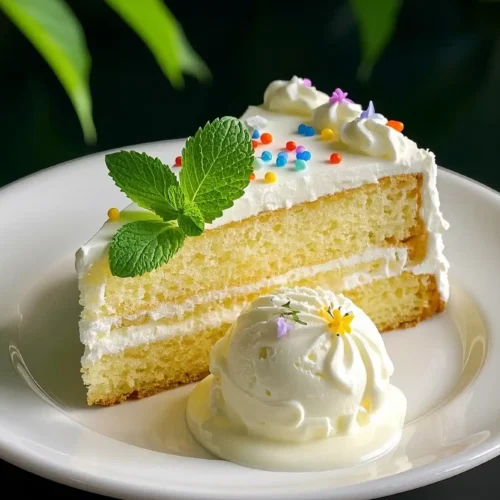
Home Economics Class Cake Recipe
🎓 Classic Home Economics Vanilla Cake – A Beginner’s Best Friend! 🍰Step into the kitchen classroom with this timeless Home Economics Cake Recipe, designed to teach the foundations of baking. You’ll master essential techniques like creaming butter and sugar, mixing dry and wet ingredients, and achieving the perfect bake.Made with pantry staples — flour, sugar, eggs, butter, and milk — this simple vanilla cake bakes up light, fluffy, and golden in just 25–30 minutes at 350°F (175°C).Whether you’re brand-new to baking or teaching young chefs their first recipe, this cake is the perfect starting point!
Ingredients
- 1 ¼ cups 155g All-purpose flour
- 1 ¼ tbsp. Baking powder
- ¼ tbsp. Salt
- ⅓ cup 75g Unsalted butter
- ¾ cup 150g Granulated sugar
- 2 tbsp. Large eggs
- ½ tbsp Vanilla extract
- ½ cup 120ml whole milk
Instructions
- Preheat the Oven: Preheat your oven to 350°F (175°C). Grease and flour one 8-inch round cake pan or line it with parchment paper.
- Mix Dry Ingredients: In a medium-sized bowl, whisk together 1 ¼ cups flour, 1 ¼ teaspoons baking powder, and ¼ teaspoon salt. Set aside.
- Cream Butter and Sugar: In a large bowl, beat together ⅓ cup softened butter and ¾ cup sugar using an electric mixer until light and fluffy (about 2-3 minutes).
- Add Eggs and Vanilla: Add 2 large eggs one at a time, beating well after each addition. Then, stir in ½ tablespoon vanilla extract.
- Combine Dry and Wet Ingredients: Gradually add the dry ingredients into the butter mixture, alternating with ½ cup milk. Start and end with the dry ingredients. Mix gently until just combined—don't overmix.
- Pour and Bake: Pour the batter into the prepared pan, smoothing the top with a spatula. Bake in the preheated oven for 20-25 minutes, or until a toothpick inserted into the center comes out clean.
- Cool: Allow the cake to cool in the pan for about 10 minutes. Then, remove it from the pan and transfer it to a wire rack to cool completely.
- Serve: Once cooled, you can frost or serve as is. Enjoy your homemade cake!
Notes
📝 Tips for the Perfect Home Economics Cake
📏 Measuring Ingredients:Accurate measurements are key to a perfect cake texture. Use dry measuring cups for flour and sugar, and liquid measuring cups for milk to ensure precision. 🌡️ Room Temperature Ingredients:
Bring your butter, eggs, and milk to room temperature before mixing. This helps them blend more smoothly and creates a more even batter. 🚫 Don’t Overmix:
Mix just until the ingredients are combined. Overmixing can lead to a dense, tough cake instead of a light and fluffy one. ⏱️ Baking Time Awareness:
Every oven is different! Begin checking for doneness at 20 minutes by inserting a toothpick into the center. If it comes out clean, your cake is ready.
🔁 Substitutions & Variations
- Butter: Can be swapped with vegetable oil (texture may vary slightly).
- Milk: Use almond, oat, or soy milk for a dairy-free version.
- Vanilla Extract: Try almond extract or a bit of lemon zest for a flavor twist.
❄️ Cooling & Serving Suggestions
Cool Before Frosting:Let the cake cool in the pan for 10 minutes, then remove and cool completely before frosting to prevent melting. Frosting Ideas:
This cake is delicious with vanilla buttercream, cream cheese frosting, or simply dusted with powdered sugar for a minimal finish. 🎂 Want a Layer Cake?
Double the recipe and bake in two pans. Once cooled, layer and frost for a classic, bakery-style vanilla layer cake.